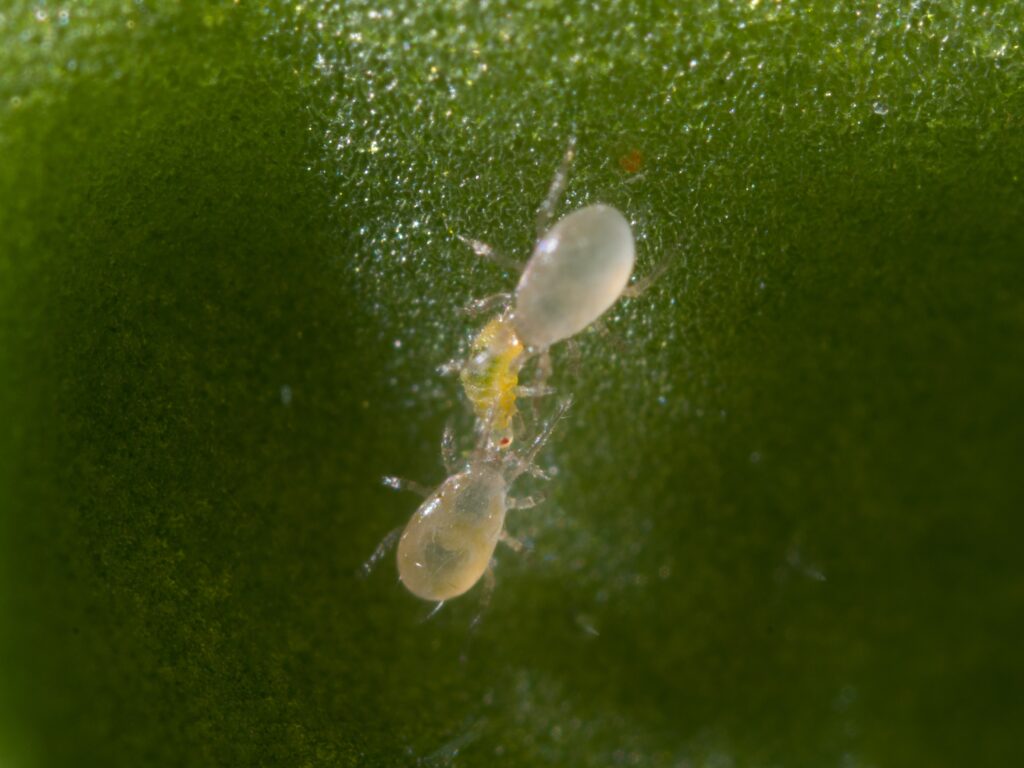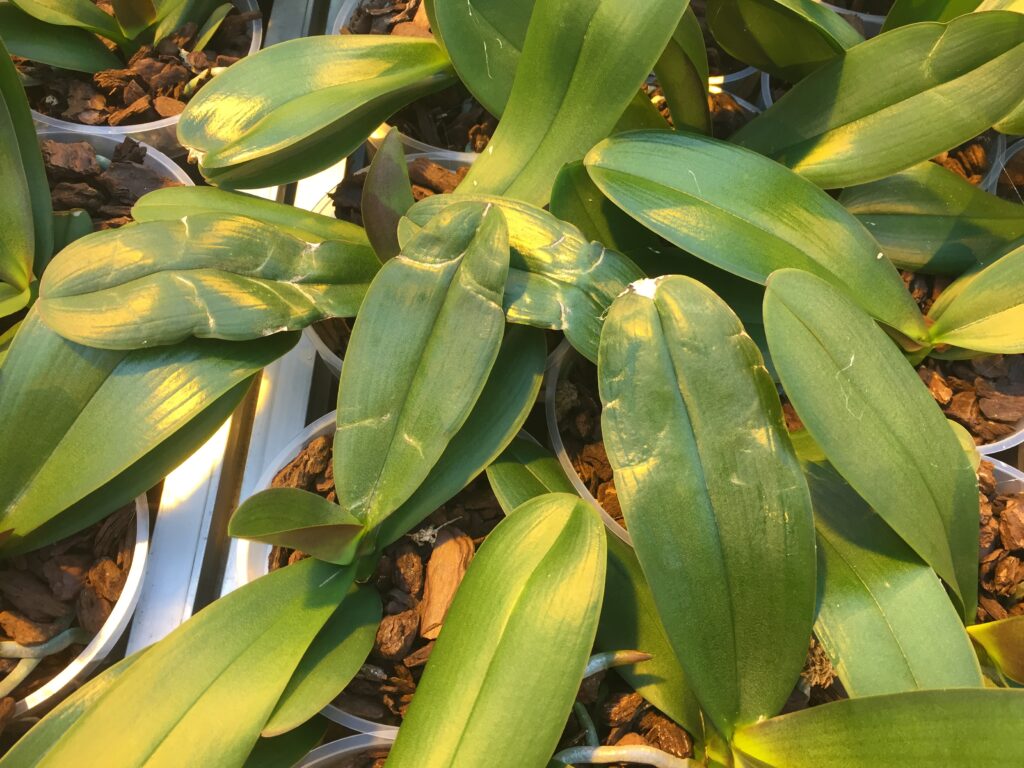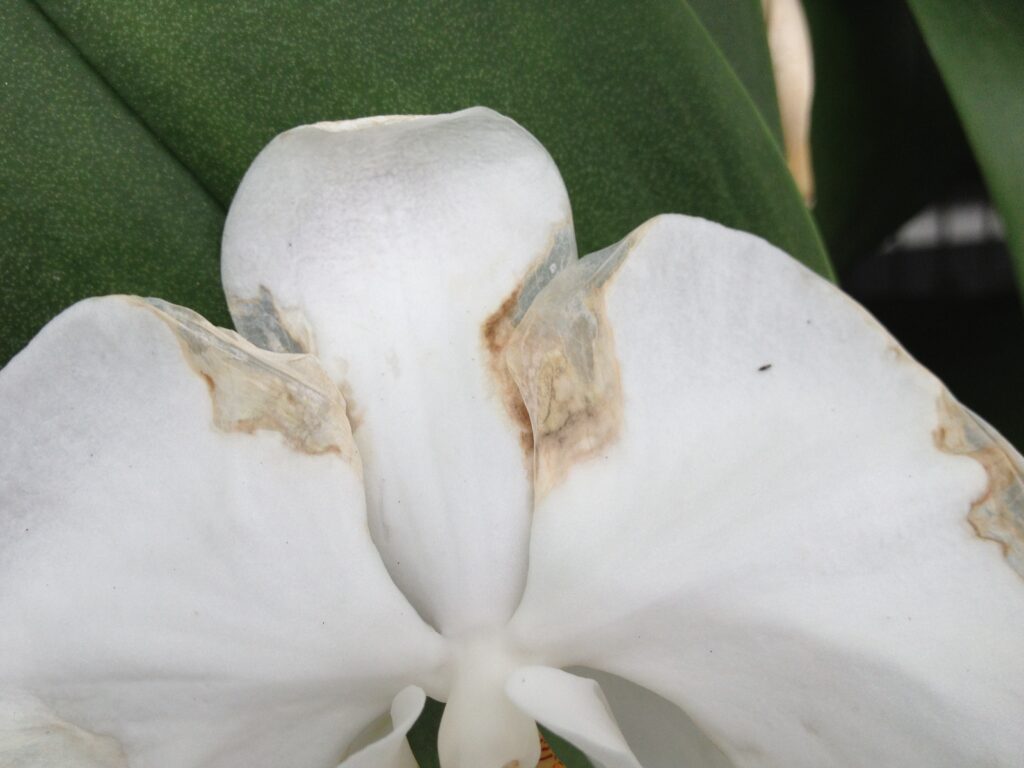Damage
Thrips can be divided into two groups: leaf thrips and flower thrips. The leaf thrips only live on plant juices, while the flower thrips can also live on pollen. Both larvae and adult thrips scrape open the plant tissue, after which they suck the plant juices. In the cultivation of Phalaenopsis, we can distinguish between infestations of western flower thrips and Dichromothrips corbetti (vanda thrips). Orchid thrips (Chatanaphothrips orchidii), may also occur. In recent years, Dichromothrips corbetti has been the main cause of crop damage and this occurs at a very young plant phase. The damage on the leaf is mainly visible as V-shaped deformations. The branches can also grow incorrectly, which leads to bud drop. In the flowers, the sucking damage at the edge of the leaf creates translucent spots. Less visible is the growth inhibition that can occur with a lesser degree of damage.
- Thrips damage in the flowers (left) and on the leaf (right).
Control
Chemistry
As is also evident in other crops, it is important that chemical thrips control is carried out in blocks and that the products are alternated in the right way. It is also important to use a shorter interval in the warm sections, due to the shorter development time at 28°C.
Many agents are contact agents, so a good spray technique is crucial. If well dispersed, the underside and the stalk of the plant are also included. In warm growing conditions, treatment of the whole space with LVM or pulsFOG works well. Caution is advised in the cooling and finishing phase when using pulsFOG, as the motor emits ethylene gas that can cause bud drop. When spraying an agent, it is best to use a sugar solution (Attracker). This activates the thrips, bringing them out of their hiding places.
Biology
Biological control of thrips in Phalaenopsis is still at an early stage. Biological thrips control focuses mainly on the growing phase of the crop, because as soon as the plants are taken into the cooling phase, the thrips pressure must be under control. Dichromothrips corbetti can cause major problems again in the flowering phase.
The known natural enemies of thrips have potential. However, partly due to the hidden way of life and the very high local densities of these thrips, they are not easy to control. Our successful control of the false spider mite (Brevipalpus) with Swirski-Mite also slows down the development of vanda thrips. Macro-Mite, a soil predatory mite, which is used on many farms to control soil pests, also works against the pupal stage of thrips.

Swirski-Mite (Koppert)
The application of nematodes (Steinernema feltiae) against thrips may also offer prospects for Phalaenopsis cultivation. The nematode always works if it gets to its destination. Therefore, it is important that the substrate is moist. Releasing nematodes in the evening on the same day as watering results in longer efficacy. When dosing the nematodes, it is also important that they are supported properly in the solution by a recirculation pump or stirring mechanism.
The paper on biological control in this article was written with the help of Wim van der Meer and Marjolein van der Knaap-Stolk, consultants in floriculture at Koppert Biological Systems.







